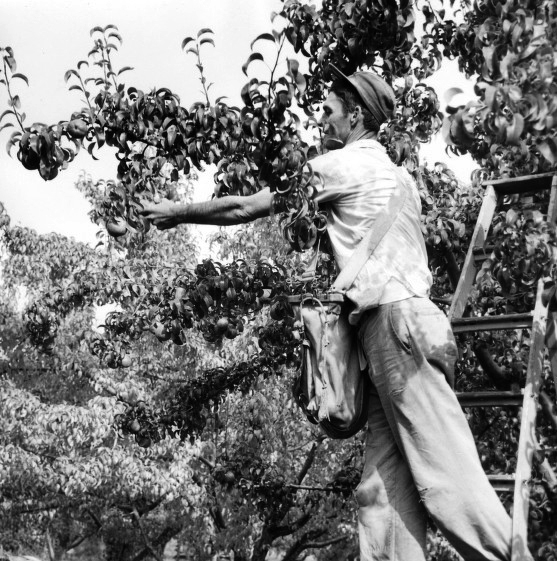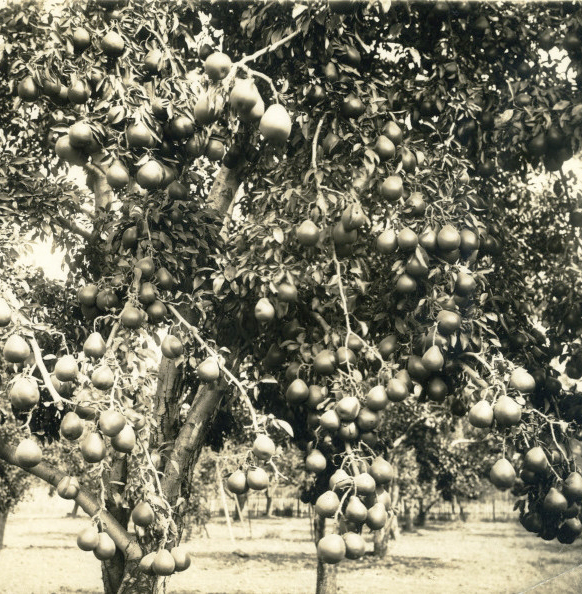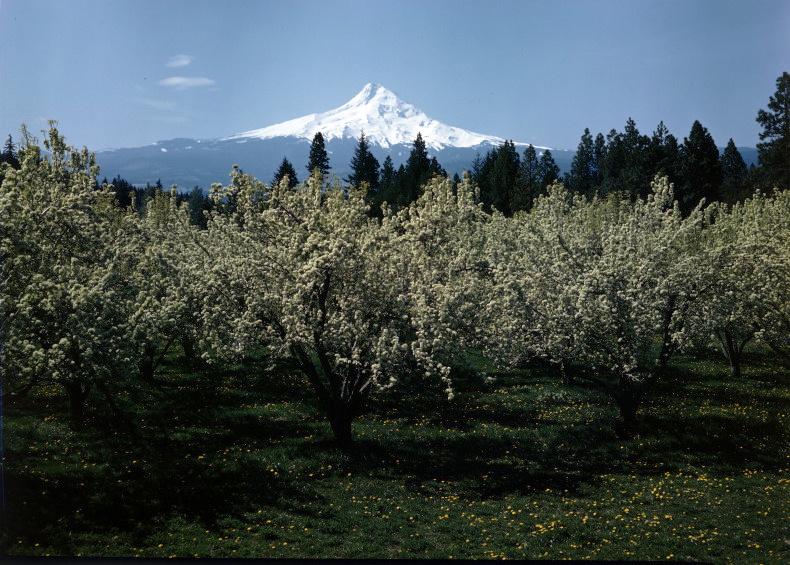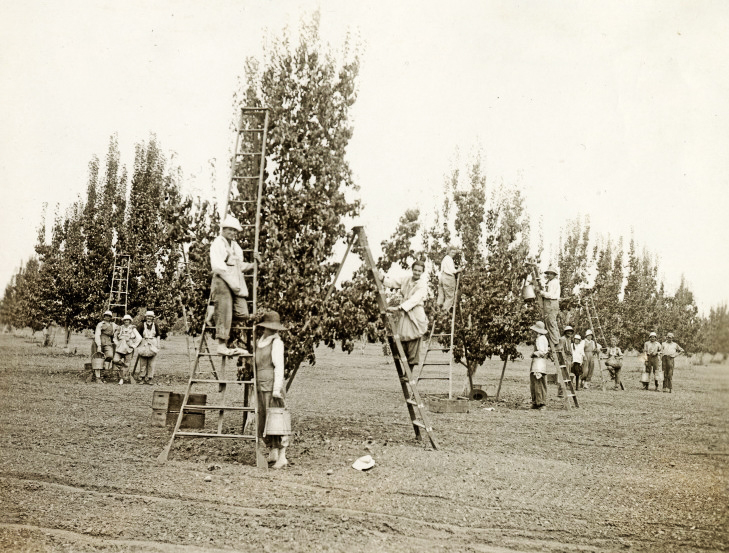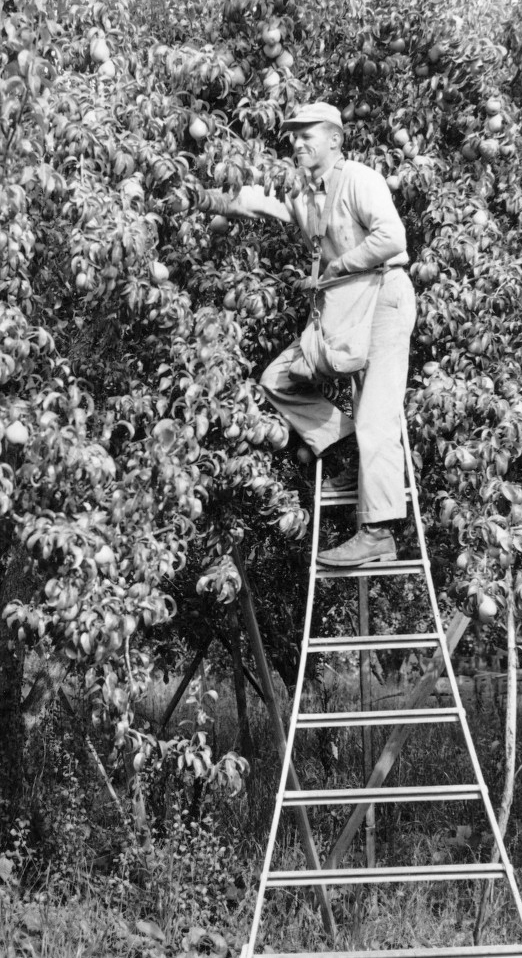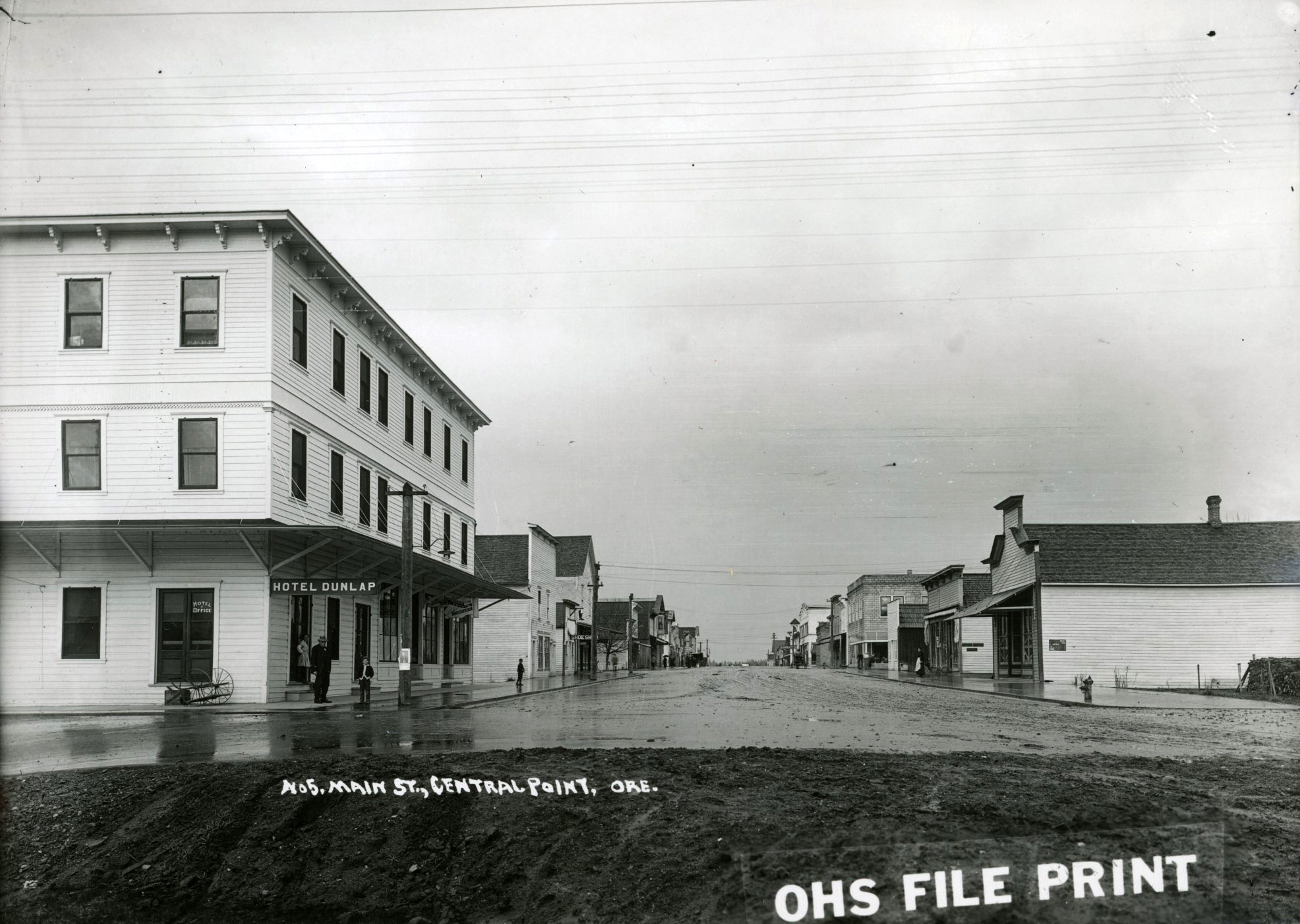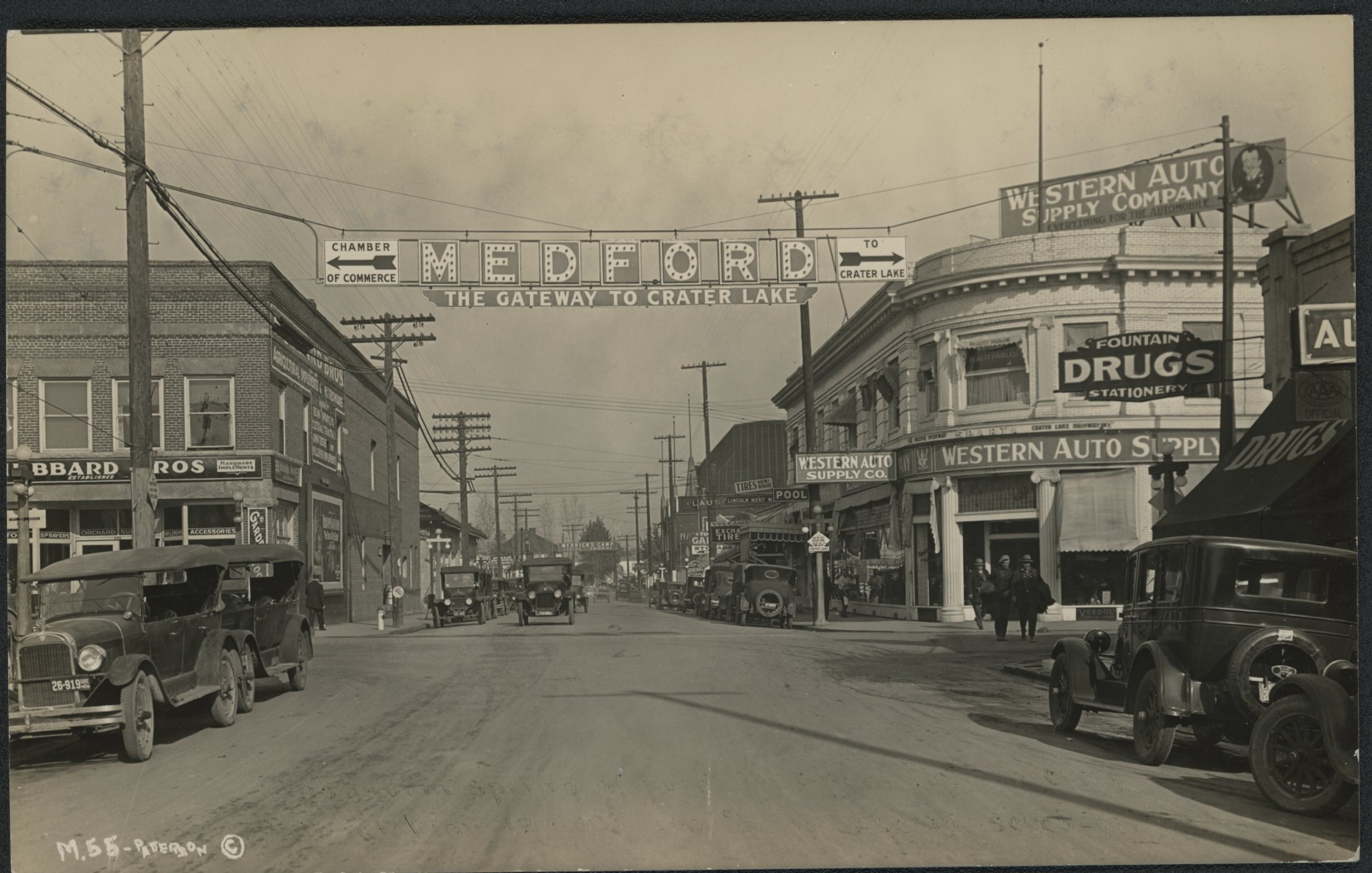European pears (Pyrus communis) thrive in the temperate climate of the coastal western states. Pear cultivation got its start in Oregon when Iowan Henderson Luelling brought two large boxes of fruit-tree sprouts—apples, pears, cherries, and more—to Oregon in 1847. Today, Oregon produces about 800 million pears annually, nearly 300 pears per Oregonian.
Nationally, the state is second (after Washington) and in some years third (behind California) in fresh pear production. Oregon has about 19,000 acres of pear orchard land, with primary growing regions in the Hood River area and the Rogue Valley. In 2004, the top five pear-producing counties in Oregon were Jackson, Josephine, Hood River, Wasco, and Marion, which produced 265,801 tons of pears, about the weight of three cruise ships.
The father of the southern Oregon pear industry is Joseph H. Stewart, who founded Eden Valley Orchards in Medford. The railroad had come to southern Oregon in 1883, and Stewart, a nurseryman from Illinois, saw opportunity. He established his orchard in 1885 and sold it in 1899 to Colonel Gordon Voorhies, who expanded it to 700 acres. In 1910, hotelier Samuel Rosenberg bought 240 acres of pears to found Bear Creek Orchards, where his sons, Harry and David, developed the Royal Riviera brand of Comice pears. Today, Bear Creek Orchards, along with Naumes Fruit Gifts in Medford and Associated Fruit in Phoenix, are responsible for about 90 percent of the Rogue Valley pear industry.
The story of Hood River pears is different. The first fruit trees were planted by Nathanial Coe in 1854, followed in 1876 by E.L. Smith’s thirty-acre commercial apple orchard. Apple orchards and strawberry fields dominated the area for many years, but after a freeze of 27 degrees below zero in 1919, many Hood River farmers replanted with frost-resistant pear trees.
Today, Hood River County is the world’s leading producer of Anjou pears, a short-necked winter pear. Many Hood River Valley orchards are relatively small and operated by families, but together they account for about two-thirds of the state's pears. Since 1992, the Hood River Valley has branded itself as the Fruit Loop, the brainchild of growers Kaye White and Thom Nelson, who proposed an excursion map of U-pick-it orchards and country stores.
Oregon growers established fruit-packing and refrigerated storage cooperatives like the Southern Oregon Sales, formed in 1926 by Leonard and Alfred Carpenter, Gordon Voorhies, Chandler Egan, and Corning Kenly. SOS, as it was known—with the outline of a pear representing the “O”—grew to process an annual 15,000 tons of pears.
In the Hood River Valley, the Apple Grower’s Association has been in continuous operation since 1913, marketing its fruit under a Blue Diamond brand. Operating today as Diamond Fruit Growers, the cooperative represents about 100 growers and packs over 55,000 tons of pears a year. Other cooperatives include Tree Top, which has 2,500 members in Oregon, Washington, and Idaho. The coop operates two processing plants in Oregon—one in Woodburn and one in Medford—to produce concentrate purees, formulated fruit sauces, and dried fruit flakes. The industry also supports marketing organizations, such as the Pear Bureau Northwest, a nonprofit established in 1931.
The pear industry is not without challenges. Weather and diseases like the bacterial fireblight are constant concerns, and about a third of the state’s pears are exported, so international competition and tariffs are issues. Growers, packers, and retailers are diversifying, cutting costs, trying to sell land, and increasing marketing and educational efforts. Pear orchardists are trying new farming methods, developing new pear products, and looking for new markets.
In 1981, the U.S. Department of Agriculture established one of its National Clonal Germplasm Repository sites in Oregon, an eight-acre orchard intended to collect the world’s pear varieties. The Corvallis facility has nearly two thousand pear varieties and maintains a gene bank of frozen tissue samples. In 2005, the Oregon legislature named the pear the state fruit.
-
Pear picker.
Pear picker. Photo Wanda Gifford, Oreg. State Univ. Archives, Gifford Photo Collec., P218 SG 4 0833
-
Pear orchard, Douglas County, 1920.
Pear orchard in Douglas County, Oregon, 1920. Oreg. State Univ. Archives, Ext. Service Photo. Collec., P062:Acc95 044 pear
-
Pears, processing plant, 1930.
Comice pears in the C. H. Lewis packing house, 1903. Oreg. State Univ. Archives, Horticulture Dept., P090:3
-
![Pear blossoms in a Hood River Valley orchard, 1940.]()
Pear blossoms, Mt Hood, 1940.
Pear blossoms in a Hood River Valley orchard, 1940. Photo Ralph Gifford, Oreg. State Univ. Archives, Gifford Photo Collec., P218:RIG
-
Pear pickers, 1918.
Women picking in Comice orchard, 1918. Oreg. State Univ. Archives, Ext. Bulletin Illustr., P020:439
-
Pear harvest, Parkdale.
Jerry Routson of Parkdale, Oregon, in the Hood River Valley. Photo Wanda Gifford, Oreg. State Univ. Archives, Gifford Photo Collec., P218 SG 4 0831
Related Entries
-
![Bing cherry]()
Bing cherry
Bing, perhaps the most famous and highly regarded sweet cherry in the w…
-
![Central Point]()
Central Point
Central Point is located about thirteen miles south of Table Rocks in t…
-
Harry & David/Bear Creek Orchards
Harry & David, the marketing brand for Medford's Bear Creek Corporation…
-
![Hood River (city)]()
Hood River (city)
Situated in the Columbia River Gorge about sixty miles east of Portland…
-
![Medford]()
Medford
Medford, the county seat of Jackson County, was platted in 1883 in the …
Related Historical Records
Map This on the Oregon History WayFinder
The Oregon History Wayfinder is an interactive map that identifies significant places, people, and events in Oregon history.
Further Reading
"Hood River Pear Growers Try Different Ways To Market." Oregon Public Broadcasting, Jan. 3, 2009.
Caldwell, J.R. "The First Fruits of the Land: A Brief History of Early Horticulture in Oregon." Oregon Historical Quarterly 7:1 (March 1906), 28-51, and 7:2 (June 1906), 151-162.
Cross, Timothy L. and Seavert, Clark E. "Special Report 927: A Case Study in Agricultural Labor: Tree Fruit Production in Oregon's Hood River Valley." Corvallis: Oregon State University Agricultural Experiment Station, Aug. 1993. http://ir.library.oregonstate.edu/xmlui/bitstream/handle/1957/12088/SR_927.pdf?sequence=1.
Flores, Barbara Jeanne. The Great Book of Pears. New York: Ten Speed Press, 2000.

